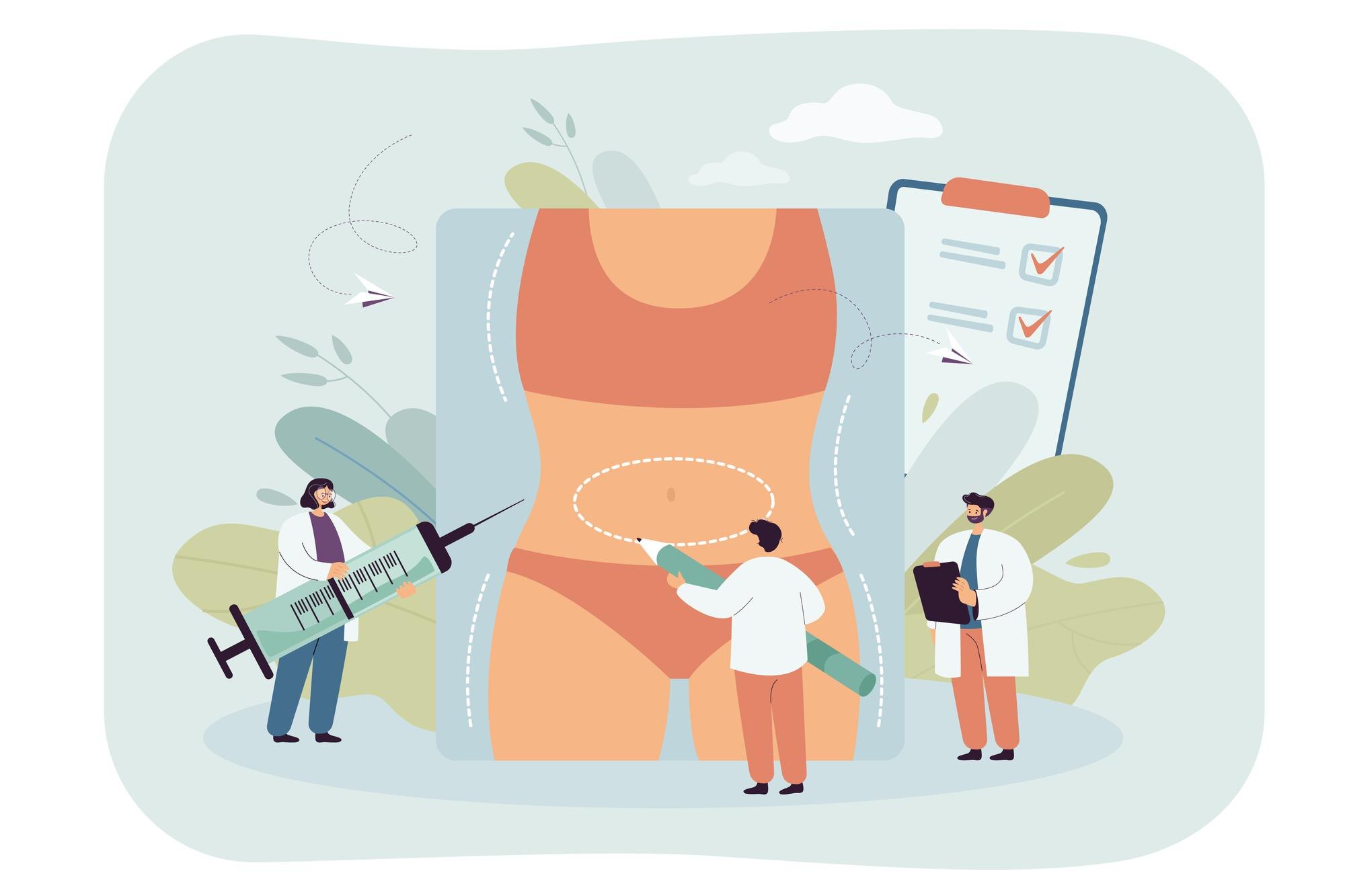Can Liposuction Cause Blood Clots? Understanding Risks, Prevention, and Recovery
Nov-30-2024

Liposuction is a widely popular cosmetic procedure that helps contour the body by removing excess fat. While generally safe when performed by a skilled surgeon, it is still a surgical procedure with potential risks. One of the serious complications associated with liposuction is the formation of blood clots, which, if untreated, can lead to severe health issues. This article explores the connection between liposuction and blood clots, how to recognize symptoms, preventive measures, and tips for a safe recovery.
What Are Blood Clots?
Blood clots are semi-solid masses formed when blood coagulates to stop bleeding. While clotting is a natural bodily function, abnormal clot formation in veins or arteries can pose serious health risks. There are two primary types of blood clots:
-
Deep Vein Thrombosis (DVT):
A clot that forms in the deep veins, usually in the legs. This is a common concern after surgery, including liposuction. -
Pulmonary Embolism (PE):
A potentially fatal condition where a blood clot travels to the lungs, causing blockages in blood flow.
How Liposuction May Lead to Blood Clots
Blood clots can occur after liposuction due to several factors related to the procedure and recovery process:
-
Surgical Trauma:
Liposuction involves the insertion of a cannula to remove fat, which can damage blood vessels. This trauma may increase clot formation in the surgical site. -
Reduced Mobility Post-Surgery:
Recovery often involves limited physical activity. Prolonged immobility can slow blood flow in the veins, increasing the risk of clot formation, especially in the lower body. -
Anesthesia Effects:
General anesthesia, often used during liposuction, may temporarily affect blood circulation, creating conditions conducive to clot development. -
Compression on Veins:
Compression garments, while crucial for recovery, can occasionally exacerbate blood flow issues if not fitted properly. -
Pre-existing Conditions:
Patients with a history of clotting disorders, obesity, or other medical conditions may have a heightened risk of developing blood clots.
Symptoms of Blood Clots After Liposuction
Recognizing the early signs of blood clots is critical for prompt treatment. Symptoms include:
-
Deep Vein Thrombosis (DVT):
- Swelling in the legs or arms.
- Red or discolored skin.
- Pain or tenderness in the affected area.
- Warmth in the swollen region.
-
Pulmonary Embolism (PE):
- Sudden shortness of breath.
- Chest pain that worsens with deep breaths.
- Rapid heartbeat.
- Coughing, sometimes with blood.
If any of these symptoms appear, seek immediate medical attention.
Preventing Blood Clots After Liposuction
Taking preventive measures before and after liposuction can significantly reduce the risk of blood clots. Here’s what you can do:
-
Consult a Qualified Surgeon:
Choosing an experienced and board-certified surgeon ensures that the procedure is performed safely and with minimal risk of complications. -
Preoperative Assessment:
Inform your surgeon of any pre-existing conditions, such as clotting disorders, obesity, or a family history of blood clots. -
Follow Postoperative Instructions:
Adhering to your surgeon’s recommendations regarding mobility, compression garments, and medication is crucial for recovery. -
Stay Active:
Gentle movement, such as walking, encourages blood flow and prevents stagnation in the veins. Begin light activities as soon as your doctor approves. -
Wear Compression Garments Correctly:
Properly fitted compression garments support circulation and reduce swelling. Ensure they are not too tight to avoid constricting blood flow. -
Hydrate and Maintain a Healthy Diet:
Adequate hydration and a nutrient-rich diet promote blood circulation and overall healing. -
Consider Blood Thinners:
In some cases, your doctor may prescribe blood-thinning medication to lower the risk of clots during recovery.
What to Expect During Recovery
Recovery from liposuction is a critical period for preventing complications like blood clots. Follow these tips:
-
Gradual Return to Activity:
Start with light exercises, such as short walks, to stimulate blood flow. Avoid high-impact activities until your doctor gives clearance. -
Monitor for Symptoms:
Stay vigilant for any signs of DVT or PE, especially during the first few weeks post-surgery. -
Attend Follow-Up Appointments:
Regular check-ups with your surgeon can help identify and address potential issues early. -
Avoid Smoking:
Smoking impairs circulation and increases the risk of clotting. Refrain from smoking before and after surgery.
When to Contact a Doctor
If you experience severe pain, swelling, or any symptoms associated with blood clots, contact your healthcare provider immediately. Early intervention can prevent complications and ensure a safe recovery.
FAQs About Liposuction and Blood Clots
1. Are Blood Clots Common After Liposuction?
Blood clots are relatively rare but can occur, especially in individuals with risk factors such as obesity or a history of clotting disorders.
2. How Soon Can Blood Clots Form After Surgery?
Blood clots may develop within hours to days after surgery. However, the risk remains elevated for several weeks post-procedure.
3. Can Compression Garments Cause Blood Clots?
When worn correctly, compression garments reduce the risk of clots by promoting circulation. However, improper use or overly tight garments may increase the risk.
4. What Increases My Risk of Blood Clots After Liposuction?
Factors such as prolonged immobility, obesity, smoking, and pre-existing clotting disorders can elevate the risk.
5. How Are Blood Clots Treated?
Treatment typically involves anticoagulant medication to prevent clot growth and dissolve existing clots. In severe cases, surgical intervention may be required.
Conclusion
While liposuction is a safe and effective way to enhance your body contours, it is not without risks. Blood clots are a serious but preventable complication that requires attention and proper care. By choosing a skilled surgeon, adhering to postoperative instructions, and maintaining a healthy recovery regimen, you can significantly reduce the likelihood of blood clots.
If you notice any unusual symptoms during recovery, seek medical help promptly. Staying informed and proactive is the best way to ensure a safe and successful liposuction experience.











Luxe Team